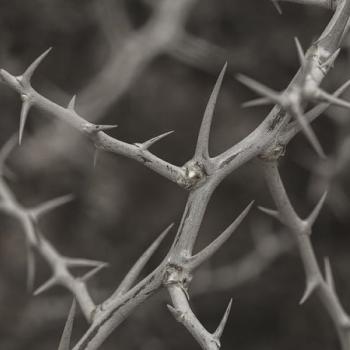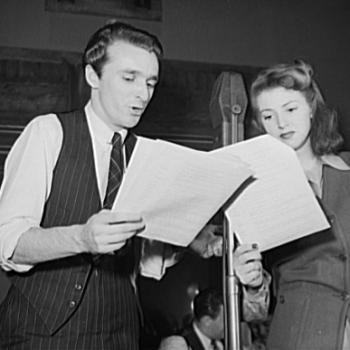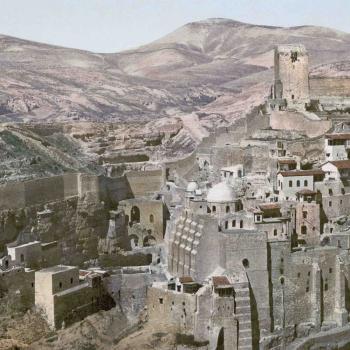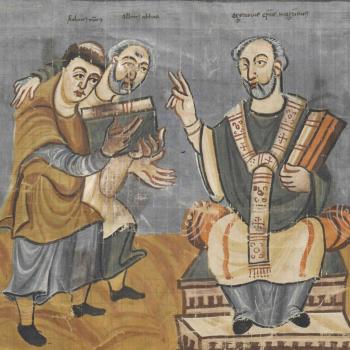After yesterday sharing some of our favorite historic sites east of the Mississippi, today we turn to the western half of the United States. Technically, our first site is north of the river, but I’m going claim Minnesota for the West.
I’ll be honest: I would recommend visiting the North Shore of Lake Superior even if there was absolutely nothing of historical interest. It’s one of the most beautiful places in the world, and you could easily keep yourself busy simply by canoeing the Boundary Waters, shopping in Grand Marais, or eating pie at Betty’s. But it also happens that the National Park Service maintains a national monument at Grand Portage: a recreation of the depot that played a pivotal role in the fur trade of the mid-to-late 18th century. From all over the North American wilderness, French voyageurs would converge on Fort Charlotte, then carry their loads nine more laborious miles to the lakeshore trading post. From there the enormous canoes of the North West Company hauled the furs to Montreal, to be sent on to the great cities of Europe as hats and coats for the rich and fashionable. If you’re an experienced hiker and camper, you can actually do the grand portage itself and rough it on the Pigeon River. But even someone as citified as me could enjoy the living history site itself (plus the well-done visitor center, with museum and introductory film), and our kids enjoyed multiple opportunities for hands-on learning. (One of my daughter’s proudest moments of 2016 came last July at Grand Portage, when she completed her activity book and was sworn in as a Junior Ranger by an NPS officer.) Lying entirely within an Ojibwe reservation, Grand Portage conveys the surprising interconnectedness of a global economy that bridged national and cultural boundaries.
With the expansion of the new United States, the North West Company decided in 1802 to leave Grand Portage and move across the Canadian border. But if you’d like to see how the trade continued on the American frontier, head back to Duluth (stopping at Split Rock Lighthouse for another reminder of the commercial importance of Lake Superior), then take I-35 south to Pine City, where the Minnesota Historical Society administers the North West Company Fur Post. Set two years after the move from Grand Portage, the post’s historical interpreters bring to life voyageurs and Ojibwe alike. Then to learn more about the latter group, wend your way to west to Mille Lacs, where the Indian Museum and Trading Post stands on another Ojibwe reservation. (Chris)
I confess, as a medieval historian, I am sometimes jaded about what Americans consider to be “historic.” But Fredericksburg, Texas kept my interest. Founded in 1846 by German settlers, it still contains a significant number of nineteenth-century buildings, including the whimsical Nimitz Hotel and Zion Lutheran Church, one of the oldest Lutheran churches in Texas. After you finish a walking tour of the historic district (download this map), you can treat your kids to a fantastic shake from Burger Burger. (Mine are still talking about our meal there!) In between rain showers, we also enjoyed walking through the Pioneer Museum, which is both a traditional museum and a mid-nineteenth century German village. The day we visited my kids learned how to make a rope (which my son still uses) and my daughter joined in a campfire band. I would like to say she fit right in, since she was wearing boots that day. But since the they were pink with light-up stars, I don’t think she looked very authentic.
Our favorite part of Fredericksburg, however, was the National Museum of the Pacific War. (This alone makes the visit to Fredericksburg worth it.) Leave yourself sufficient time — we spent about six hours over two days — to tour the remarkable six-acre complex. With portions indoor and outdoor, it’s highly enjoyable and informative for both adults and children. (Although I would recommend being careful about some of the videos if you bring smaller children.) My son especially enjoyed the Pacific Combat Zone and the Admiral Nimitz Museum. Again, I am a medieval historian and usually consider myself not as interested in WWII. But by the end of our visit, I bought myself a Christmas ornament (which means I really liked our visit!) and a book about the war (women in the war, of course). I give it 5 stars. (Beth)
Whatever part of the world you are in, a great guide to the absolute cream of the crop among historic and cultural destinations is the list of World Heritage Sites maintained by UNESCO. The US has 23 such sites presently, our own local equivalents of the Pyramids or the Taj Mahal, but some of them remain remarkably little known even by well traveled Americans. No fewer than five of the sites were built by Native Americans. These range from ancient ritual places (Poverty Point, LA) to what we can only call medieval cities, villages and settlement complexes (Mesa Verde CO; Taos Pueblo, NM; Cahokia, IL). Each is very well worth exploring, but my personal choice is Chaco Canyon, NM — the Chaco Culture National Historical Park — a vast settlement and ritual complex built by the Ancestral Puebloan (Anasazi) people in the early tenth century, as the ritual and administrative center of an extensive surrounding area. Each of the several major central complexes is superbly preserved, with its houses and kivas, all constructed with astonishing skill and precision. There are also countless smaller sites. You could spend your life trying to explore and comprehend the Ancestral Puebloan (Anasazi) world. If Chaco Canyon existed on another continent, then every aspiring world traveler would be sure to include in on their bucket lists. And there it is, just three hours or so drive from Albuquerque. If you build in a few days in the Four Corners area, you can visit Chaco and even take a look at Mesa Verde and Canyon de Chelly. Do be sure to read Willa Cather’s The Professor’s House (1925) before hitting the region. (Philip)
Visitors to Utah — Mormons and non-Mormons alike — frequently go to Temple Square and fan out to see the Beehive State’s remarkable diversity of natural beauty. Top destinations include Zion and Bryce Canyon national parks. If one ventures to southern Utah, I recommend detouring to the site of the September 1857 Mountain Meadows Massacre. If you are not familiar, you can find a quick primer here. In short, southern Utah Latter-day Saints tricked and then slaughtered nearly 120 non-Mormon men, women, and children bound for California. The site is roughly equidistant from St. George and Cedar City, and especially if you go in the summer, its coolness and tranquility are a welcome contrast from the heat elsewhere. Especially in the midst of the serene surrounding, it’s eerie and unsettling to reflect on the animosity between Mormons and other Americans in the mid-nineteenth-century that led to the massacre.
I love visiting Mormon Historic Sites, which I’ve done in Utah, New York, and Vermont. Kirtland and Nauvoo are on my long-term wish list. These often come with tours by Latter-day Saint missionaries, which I generally enjoy but are something of a mixed bag. Mountain Meadows is different, and not just because of the macabre nature of the events there. If you go to Mountain Meadows, you will probably be alone there. The sparse signage will tell you a bit, but it will be up to you to learn about the events there and decide what to make of them. (John)
















